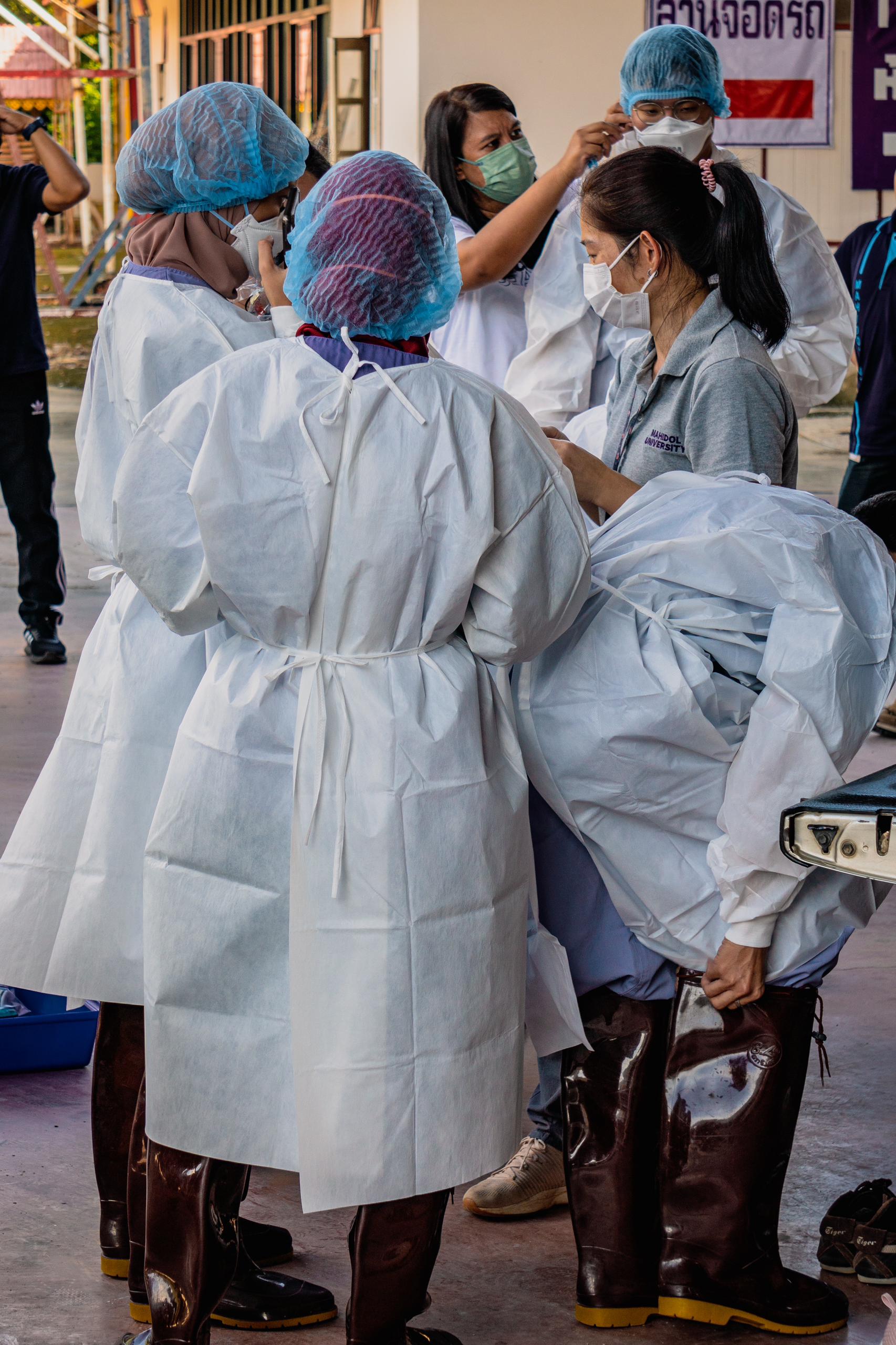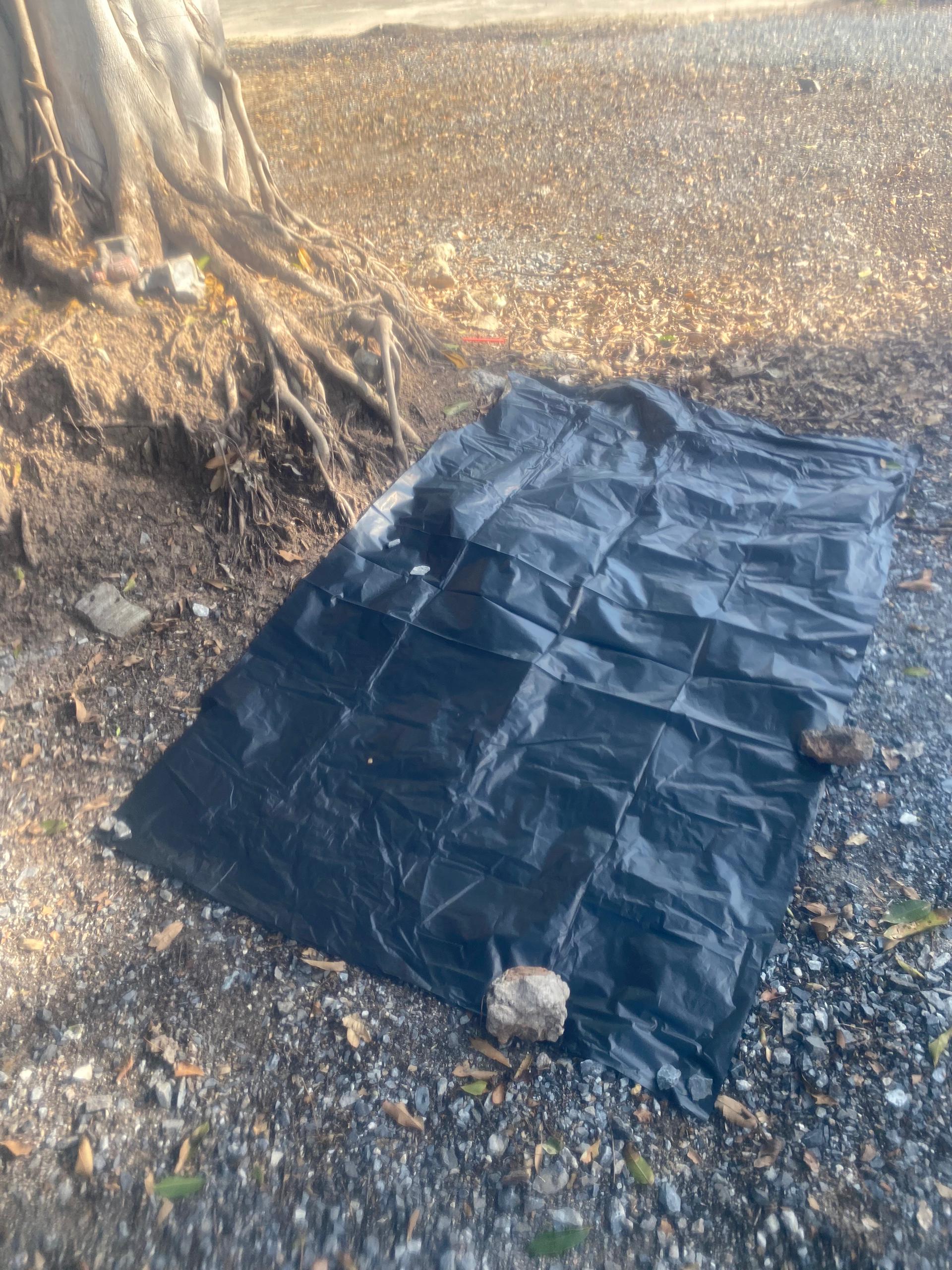WAT THA SUNG THAKSINARAM, THAILAND, November 14 2023 -
We reached Wat Tha Sung Thaksinaram, or Bat Temple, at approximately 2:40 pm (Bangkok time). The weather was sunny, and bats were actively in flight around the temple. AMDI’s team was prepared with three students, while Mahidol’s team was equipped with two students and two veterinary doctor to participate in the bat sampling.
Initially, the team had to prepare themselves by donning PPE to prevent exposure to the bats. It was my first time experiencing wearing PPE suits, and everyone was very concerned that we wore them properly, paying meticulous attention to details. After we all successfully donned the PPE, and Mahidol’s team was also prepared with materials for bat sampling, it was time for us to proceed. It was a highly dramatic moment, and I experienced goosebumps as everyone emphasized the importance of returning safely. Not going to lie, I felt like we were heroes for those 30 minutes.
Photo By @hex_zain
Donning PPE Suits
Under the scorching hot sun, clad in PPE suits, we walked approximately 250 meters towards the bats' area. While walking, Dr. Bombay explained to us how we would conduct the sampling. Upon arrival, we searched for the optimal area where the bats excreted, and we placed black plastic under those spots. The key was to position it where there had been a significant accumulation of dry bats' feces. It was essential to secure the plastic by placing stones or small-heavy materials at its corners to prevent movement. Subsequently, we waited for 15-20 minutes, allowing the bats to perform their natural activities. We returned to the waiting area with high hopes that the bats had provided us with valuable samples. During this process, I experienced another bout of goosebumps as numerous bats flew around the trees, and all memories of COVID-19 suddenly flooded my mind. Gratitude extended to those who guided me in proper PPE usage, providing a sense of safety and security.
Photo By Nurin Hanisah
Placing Black Plastics for Sample Collection
After 15 minutes, we returned to the sampling area, only to discover that no samples were present! Fortunately, as a scientists or researchers, this kind of null result is nothing new for us. We were resolute in never giving up and promptly devised new actions to address the issue. Following discussions, the decision was made to relocate the black plastic to a new area with a high likelihood of bat excretion, awaiting another 5-10 minutes. Dr. Bombay explained the common practice of leaving the black plastic overnight and checking the next evening, given the heightened bat activity during nighttime and morning hours when they are actively catching dinner and breakfast. It suddenly made sense why we had obtained no samples during the day as it was 3pm, the bats might have been at rest.
In a final attempt, we revisited the sampling area, but unfortunately, luck did not favor us that day. In the event of obtaining samples, the fecal pallets could have been extracted with disinfected tweezers, transferred to ethanol vials or plastic bags, labeled with pertinent data, and conveniently stored until analysis. Since no samples were procured, the decision was made to thoroughly clean everything in preparation for the next plan. Even in the absence of samples, adhering to proper procedures, the plastic was rolled and placed into a designated special plastic bag.
Photo By Nurin Hanisah
Plastic Rolled and Discarded into Designated Bag
Finally, we were able to remove our PPE suits, and just as we had carefully donned them, we had to understand how to take them off as well. It was crucial to start by removing the dirty outer layer first, followed by the cleaner inner layer. After we changed into our clean clothes, everyone welcomed us back as if we had just returned safely from the moon.
Photo By Anis Farhah
Pretty USM Girls
Although we did not obtain any samples, the experience truly imparted valuable lessons. Confronting danger while perspiring in PPE suits for an extended duration, experiencing fatigue, and grappling with uncertainty in the absence of tangible outcomes. Now, I comprehend the challenges faced by our frontliners during the critical period of COVID-19. If anyone ask me if I want to do this again, my answer would be an unequivocal yes!
SDG 4 - Ensure inclusive and equitable quality education and promote lifelong learning opportunities for all
SDG 17 - Strengthen the means of implementation and revitalize the Global Partnership for Sustainable Development
.jpeg)
.jpeg)
.jpeg)



.jpeg)